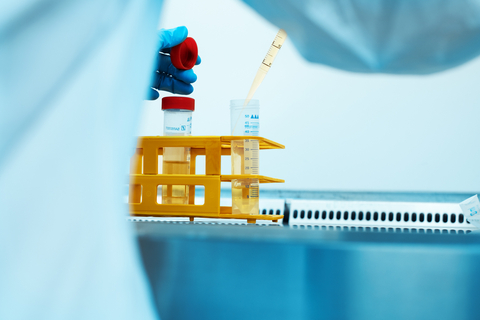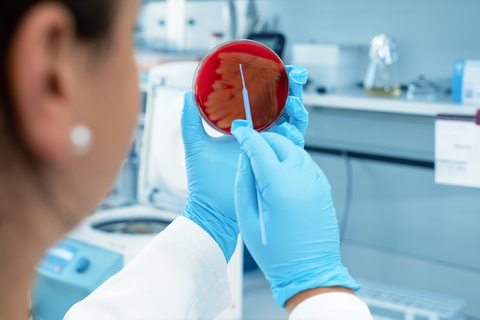预约演示
更新于:2024-11-01

Lysando Innovations Lab GmbH
更新于:2024-11-01
概览
关联
100 项与 Lysando Innovations Lab GmbH 相关的临床结果
登录后查看更多信息
0 项与 Lysando Innovations Lab GmbH 相关的专利(医药)
登录后查看更多信息
4
项与 Lysando Innovations Lab GmbH 相关的文献(医药)2018-03-01·International Journal of Antimicrobial Agents
Inhibitory and bactericidal effect of Artilysin® Art-175 against colistin-resistant mcr-1-positive Escherichia coli isolates
Letter
作者: Gerstmans, Hans ; Maervoet, Veerle E T ; Zimmermann, Pia ; Hofmann, Veronika ; Biebl, Manfred ; Briers, Yves ; Schirmeier, Eva
2014-08-29·mBio
Engineered Endolysin-Based “Artilysins” To Combat Multidrug-Resistant Gram-Negative Pathogens
Article
作者: Verween, Gunther ; Van Puyenbroeck, Victor ; Oliveira, Hugo ; Cornelissen, Anneleen ; Cenens, William ; Miller, Stefan ; Aertsen, Abram ; Walmagh, Maarten ; Pirnay, Jean-Paul ; Volckaert, Guido ; Briers, Yves ; Lavigne, Rob ; Azeredo, Joana
2014-07-01·Antimicrobial Agents and Chemotherapy2区 · 医学
Art-175 Is a Highly Efficient Antibacterial against Multidrug-Resistant Strains and Persisters of Pseudomonas aeruginosa
2区 · 医学
Article
作者: Michiels, Jan ; Defraine, Valerie ; Grymonprez, Barbara ; Cenens, William ; Biebl, Manfred ; Aertsen, Abram ; Miller, Stefan ; Lavigne, Rob ; Briers, Yves ; Walmagh, Maarten ; Pirnay, Jean-Paul
2
项与 Lysando Innovations Lab GmbH 相关的新闻(医药)2023-03-01
TRIESENBERG, Liechtenstein--(
BUSINESS WIRE
)--Severe wound infections increasingly prove to be a serious medical challenge. Complications particularly arise from the high number of infections caused by resistant or multi-resistant pathogens.
"Infections with resistant bacteria remain the greatest threat to human health. Recently, the United Nations pointed out that in 2019 alone, almost five million deaths worldwide were caused by resistant pathogens", says Univ.-Prof. Dr. med. Volkhard A. J. Kempf, Director of the Institute for Medical Microbiology and Hospital Hygiene at University Hospital of Goethe University Frankfurt.
Acinetobacter baumannii
is one of these pathogens. Its peculiarity: it is often observed in connection with infections in patients from war zones, recently in soldiers from the war in Ukraine. Infections with one of the continuously increasing multi-resistant
A.baumannii
strains can now often only be addressed with last resort antibiotics or, at worst, are untreatable.
"Severe wound infections usually have to be treated surgically in several consecutive procedures. As bacteria are also always present in neighboring and often non-removable tissue, an innovative approach of local treatment with Artilysin® is a promising future strategy", explains Univ.-Prof. Dr. med. Ingo Marzi, Director of Trauma, Hand and Reconstructive Surgery Clinic at the University Hospital of Goethe University Frankfurt.
The Artilysin® technology comprises antibacterial molecules specifically designed by the Lysando team from flexibly combinable modules.
Lysando is collaborating with the University Hospital Frankfurt am Main as part of the KMU-innovativ-22 funding initiative of the BMBF (Federal Ministry of Education and Research). In close cooperation with Univ.-Prof. Dr. med. Kempf and Univ.-Prof. Dr. med. Marzi, the development of Artilysin® prototypes has been advanced. The specifically developed molecules exhibit strong antibacterial activity against clinical
A.baumannii
strains, particularly against multi-resistant and other gram-negative germs.
These results provide a promising basis for new therapeutic approaches in the fight against these problematic pathogens.
About Lysando AG
Lysando AG is the market leader for antimicrobial proteins, so-called Artilysin® molecules. They can effectively eliminate problem-causing bacteria without associated high risk of resistance formation and microbial disbalances. Artilysin® constitutes an innovative, proprietary and environmentally friendly technology with a wide range of applications: in human and veterinary medicine, but for example also in cosmetics.
Lysando AG's research facility is Lysando Innovations Lab GmbH located in Regensburg's BioPark.

2022-12-15
TRIESENBERG, Liechtenstein--(
BUSINESS WIRE
)--The WHO has declared antibiotic resistances one of the Top 10 global threats to mankind. To counter this threat, Lysando AG has developed the so-called Artilysin® technology: Novel antimicrobial proteins with a unique mode of action.
The Artilysin® technology allows the Lysando team to design fit-for-purpose molecules by flexibly combining “modules” with antibacterial activity. In contrast to antibiotics Artilysin® also effectively attacks resistant and persistent – i.e., "dormant" – bacteria. Moreover, the technology – for example in topical applications – acts locally, does not breach the body's natural barriers or disrupt our skin's natural defense system. The modular design allows a high degree of adaptation to diverse applications and indications.
Due to the particular mode of action of Artilysin® no receptors are required and harmful bacterial cells are mechanically eliminated within fractions of a second; a mechanism that explains the high resilience towards formation of resistances. In contrast, resistance to antibiotics is increasingly being identified even before their market entry.
"In 2019, bacterial infections represented the second leading cause of death worldwide – as concluded by an international study recently published in
The Lancet
. Owing to its novel mode of action, Artilysin® is a promising approach," says Dr. Kerstin Emmrich, Head of Research and Development at Lysando AG.
For years, medical experts have been warning of the day that our "tools" against multi-resistant germs will no longer work. Artilysin® is a solution in the upcoming fight against resistance of pathogenic bacteria.
About Lysando AG
Lysando AG is the market leader for antimicrobial proteins, so-called Artilysin®s. They can effectively eliminate problem-causing bacteria without associated high risk of resistance formation and microbial disbalances. Artilysin®s constitute an innovative, proprietary and environmentally friendly technology with a wide range of applications: in human and veterinary medicine, but for example also in cosmetics.
Lysando AG's research facility is Lysando Innovations Lab GmbH located in Regensburg's BioPark. BioPark Regensburg fosters companies in biotechnology, medical technology, diagnostics & analytics as well as the local healthcare management.

100 项与 Lysando Innovations Lab GmbH 相关的药物交易
登录后查看更多信息
100 项与 Lysando Innovations Lab GmbH 相关的转化医学
登录后查看更多信息
组织架构
使用我们的机构树数据加速您的研究。
登录
或

管线布局
2025年01月18日管线快照
无数据报导
登录后保持更新
药物交易
使用我们的药物交易数据加速您的研究。
登录
或

转化医学
使用我们的转化医学数据加速您的研究。
登录
或

营收
使用 Synapse 探索超过 36 万个组织的财务状况。
登录
或

科研基金(NIH)
访问超过 200 万项资助和基金信息,以提升您的研究之旅。
登录
或

投资
深入了解从初创企业到成熟企业的最新公司投资动态。
登录
或

融资
发掘融资趋势以验证和推进您的投资机会。
登录
或

来和芽仔聊天吧
立即开始免费试用!
智慧芽新药情报库是智慧芽专为生命科学人士构建的基于AI的创新药情报平台,助您全方位提升您的研发与决策效率。
立即开始数据试用!
智慧芽新药库数据也通过智慧芽数据服务平台,以API或者数据包形式对外开放,助您更加充分利用智慧芽新药情报信息。
生物序列数据库
生物药研发创新
免费使用
化学结构数据库
小分子化药研发创新
免费使用